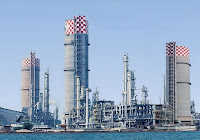SNGPL responsible for shortfall in urea production
Fertilizer plants getting gas from Sui Northern Gas Pipeline Limited (SNGPL) witnessed yet another year of dismal performance due to unprecedented cut in gas supply. As against a name plate capacity of over 2.2 million tons, these plants produced only 256,500 tons of urea during calendar year 2012, which is lowest ever capacity utilization of 11% by these plants in the history of Pakistan.
Collectively, urea production in the country was also very dismal as the fertilizer sector produced 4.1 million tons of urea as against an installed capacity of 6.9 million tons. This was even lower than a production 4.8 million tons achieved during 2011.
Fertilizer sector has been witnessing a steep fall in its production as it produced 5 million tons of urea in 2009 against a capacity of 5 million, 5.15 million tons against 5.6 million tons of capacity in 2010, 4.9 million tons against 6.9 million tons capacity in 2011 and finally 4.1 million tons against the total production capacity of 6.9 million tons in 2012.
Currently, all the four fertilizer plants getting gas from SNGPL are facing a complete shutdown. These are Pakarab, Dawood Hercules, Engro’s new plant and Agritech, which remained the main victims of the gas load management plan being followed by gas marketing companies.
Year 2011 and 2012 have been the worst years for fertilizer sector as instead of providing gas to local fertilizer plants to produce economical and affordable urea domestically, the government preferred to import Urea by spending a hefty amount of over US$ 1 billion from precious foreign exchange.
Despite the unprecedented gas curtailment over the last two years, domestic urea manufacturing plants have provided Rs365 billion benefit to the farmers over the last 5 years, by keeping local urea prices significantly below international levels.
This also negates the general perception that Fertilizer manufacturers are paid huge subsidy by the Government of Pakistan in the form of reduced feed gas prices. This subsidy is not for the manufacturers, but is in fact passed on to the farmer via reduced prices.
Based on current feed and fuel gas prices, subsidy per bag of urea works out to be Rs228 per bag. In essence if Government subsidy on gas price was taken away, urea prices would only increase by Rs228 per bag.
On the other hand the difference between price of domestic and international urea is more than Rs1,000 per bag. Therefore, not only the fertilizer industry passes on the advantage of lower food gas to the farmers, the industry also pays huge taxes to the government.
One of the factors responsible for the price increase is curtailment of gas supply as the Government failed in honoring gas supply agreement with the fertilizer manufacturers despite the fact that industry has recently invested $2.3 billion in the country based on the government approved policy designed to encourage investment in the sector.
Ironically not only fertilizer plants who suffered huge losses due to gas curtailment but the Government has also incurred significant losses by importing urea worth over $ 1 billion and providing subsidy of over Rs50 billion on imported urea in the last 2 years.
The policy planners failed in realizing that agriculture contributes around 25% to the GDP of Pakistan and also is the raw material supplier to two large scale industries, Textiles and Sugar. Fertilizer industry plays an important role in achieving food security. The decline in urea production poses a severe threat as the country might miss its agriculture and export targets.
